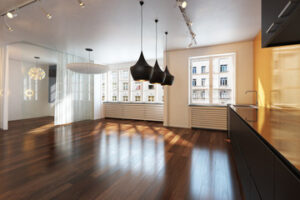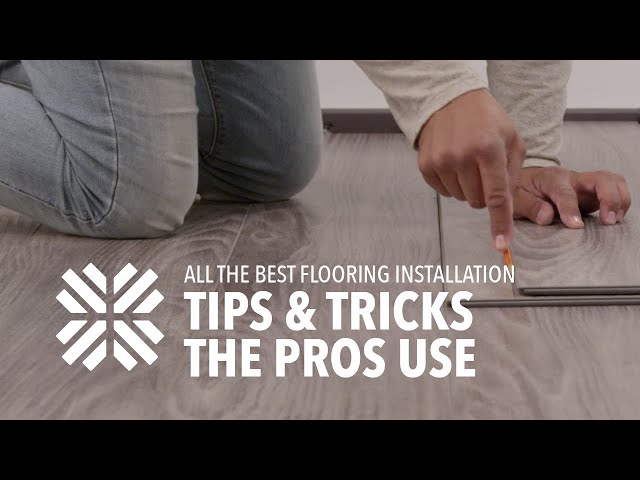Hardwood floors are timeless, add value, and create a warm, healthy environment. They minimize dust allergies and other respiratory ailments and are easy to clean.

Solid hardwood works best in above-ground rooms where moisture and humidity are not issues. If they are, choose engineered wood with a plywood core. If you need some professional help, contact Hardwood Flooring Helena MT now!
Hardwood floors are a great addition to any home or business, and they’re also extremely durable. They’re able to resist scratches, scuffs and dents well, and they can even endure moisture and changes in humidity. However, to protect your hardwood floors and prolong their lifespan, it’s important to follow certain maintenance tips and guidelines.
The first step is to assess the expected wear and tear in your space. Consider how many people will be using the room, as well as whether you have pets or children. This information can help you determine if you need to choose a more durable species, or a more resistant finish.
You can find out how durable a particular wood is by looking at its Janka hardness rating. This measurement indicates how much force is required to embed a steel ball into the wood. Oak, for example, is incredibly durable and has a Janka rating of 1290.
To increase the durability of your hardwood flooring, look for a factory-applied and UV cured polyurethane finish. This coating penetrates the pores of the wood and is able to defend against scratches and other common damages.
Maintaining proper moisture levels is also vital for protecting your hardwood floors. Excessive moisture can lead to warping, buckling and discoloration. To avoid these issues, use rugs or mats in high-moisture areas, and be sure to wipe up spills as soon as they happen. Additionally, it’s a good idea to use dehumidifiers in dry winter months and humidifiers in humid climates to keep the humidity level stable.
If you’re on a budget, you can still get the superior durability of solid hardwood by choosing engineered hardwood instead. Engineered hardwood is made with a layer of natural wood on top and a more durable plywood core in the middle. This means that it’s able to stand up to a lot more abuse than solid wood, and it comes in a variety of wide plank widths that create a spacious, open atmosphere.
Bamboo is a sustainable option for hardwood floors, and while it’s soft in its unfinished state, it can become incredibly durable with the help of aluminum oxide coatings. This process is a bit more time-consuming and costly than traditional finishes, but it can make your bamboo floors nearly as tough as some of the hardest hardwoods.
Beauty
Wood flooring is known for its beauty, and it adds a warm, classic elegance to any home. It goes with virtually any interior design theme, from rustic and country to contemporary. It is also durable enough to withstand changes in fashion trends and can easily be refinished when necessary.
Hardwood floors can be customized to match your home’s décor, with a choice of stains and finishes. Light colors like maple and hickory work well in modern designs, while darker walnut and mahogany are perfect for more traditional or formal homes. The natural color variations in hardwoods, along with a variety of grain patterns and shades, create unique visuals that can’t be duplicated by painted or carpeted surfaces.
Unlike some types of carpeting, hardwood is extremely easy to clean and maintain. Sweeping or vacuuming is usually all that is needed to remove dirt and dust, but you can also use a steam cleaner if you prefer. Even if a spill does occur, you can simply wipe it up and the floor will be good as new.
Many people choose to invest in solid hardwood floors because they increase a home’s resale value. In addition, they are an investment in elegance that will last for generations. This is particularly true for hickory, oak, and maple flooring, as they are known for their durability, timeless beauty, and low maintenance.
If you are looking for something a little more contemporary, consider engineered hardwood. These floors have a wood wear layer and a plywood base that cuts costs and utilizes materials that would otherwise be wasted. They can be stained to match your existing décor, making them the perfect complement to any room.
Whatever style you choose, hardwood floors will never go out of fashion. They are strong and durable, so they will hold up through changing fashions and will look beautiful for years to come. If you are on a budget, you can still enjoy the classic elegance of wood floors by choosing a cost-effective alternative such as hickory, oak, or mahogany. If you prefer a more natural and organic look, you can also opt for bamboo or similar products.
Versatility
Hardwood floors are available in a variety of finishes. From light hues that allow the natural wood grain to shine through, to rich dark stains that make a statement, there are many options to match hardwood with your existing furniture and home decor. Additionally, you can experiment with unique installation methods like diagonal or herringbone layouts for added visual appeal.
While it may seem that traditional hardwood is more suited to classic home design, this is not necessarily true. Depending on the type of stain and finish used, hardwood flooring can be matched with modern and contemporary designs as well. The clean lines of this floor type are perfectly complemented by sleek, simple furnishings.
With proper care, hardwood can last for decades. This longevity makes it a popular choice for homes that are looking to add value and be ready for resale at some point in the future. In addition to their beauty, hardwood floors are easy to maintain. Regular sweeping or vacuuming and occasional mopping will keep your floors looking fresh. Additionally, the fact that hardwood does not hold onto dust and other allergens can make your home a healthier place to live.
Solid hardwood is a very durable flooring option that can be sanded and refinished many times over its lifespan. This makes it a great choice for high-traffic areas, though it is also sensitive to moisture and can be damaged by excessive water exposure. It is not recommended for bathrooms or basements, however.
Engineered hardwood is a good alternative to solid wood and offers many of the same style options as real wood. Engineered wood is manufactured in layers, with anywhere from three to seven layers bonded together with adhesives under heat and pressure. This means that engineered wood is more forgiving to moisture, and it can be installed in areas where solid wood would not perform well.
While it may not be as luxurious as solid wood, engineered hardwood is a great choice for those who want the look of real wood but do not want to sacrifice durability. Engineered hardwood can be nailed down or glued down and is compatible with radiant heating systems. It is also available in a wide range of finishes and can be patterned to mimic the look of reclaimed or aged wood.
Value
Hardwood floors are a great investment because they add value to your home. Real estate professionals and potential home buyers are often willing to pay a premium for homes with hardwood floors, which are also easier to clean and maintain than carpets. In fact, many homeowners see a 70% to 80% return on their investment in hardwood floors. However, it’s important to keep in mind that these numbers will vary by region, market conditions, and the type of flooring you choose.
One of the best things about hardwood floors is that they’re a versatile option for any style of home. There are many different stain colors and types of wood available, which means you can create a look that fits your taste while staying within your budget. In addition, there are a wide range of widths of planks available. This makes it easy to create a custom floor that will make your space stand out from the crowd.
Another way to add value to your home with hardwood floors is by installing radiant floor heating. This innovative system works like a stove beneath your hardwood floors to evenly disperse heat throughout the room. This will ensure that your space is always comfortable and will help reduce your energy costs.
Finally, consider upgrading your hardwood floors with a decorative finish. This will give them an added touch of sophistication and elegance that will impress potential buyers. A variety of finishes are available for hardwood floors, including hand-scraped, distressed, and reclaimed wood options. These finishes are all very popular and can enhance the overall appeal of your home.
While solid hardwood is a premium flooring option, it’s also expensive. Engineered hardwood is a more affordable alternative that offers many of the same benefits as solid wood floors. It’s made from layers of wood veneers and is moisture-resistant, which makes it a good choice for areas that are frequently exposed to water and humidity. Engineered hardwood is also available in a range of designs, including softer exotic species, specialty textures, surface treatments, and color effects.
While there’s no guarantee that adding hardwood floors will increase your home’s value, it’s a good idea to do some research and discuss your options with a reputable flooring company. By taking the time to carefully consider your options, you’re more likely to find the hardwood floors that will be the perfect fit for your home and your budget.

